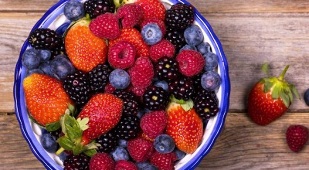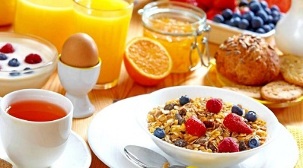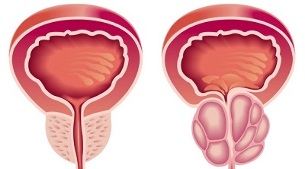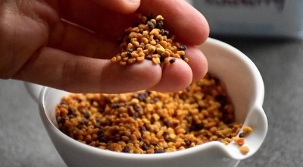
Some of the most common diseases of the male reproductive system are prostate adenoma and prostatitis. The second is an inflammatory process that occurs in the tissues of the prostate, the first is a tumor that forms in this organ.
These are problems that are very actively diagnosed in men. But everyone knows that proper nutrition can protect against many diseases and become part of the treatment process. Therefore, in prostatitis and prostate adenoma, diet plays an important role in treating this disease. With its help, the healing process is more active and takes less time.
The essence of such a diet
Nobody would argue that food is both healing and crippling. For this reason, when pathological changes are found in the patient's body, most often the doctor prescribes restrictions on a number of foods consumed. A similar diet was developed to help the male body fight diseases that affect the prostate.
It is selected individually for each patient, taking into account the severity of the pathology, his general condition and medical history, as well as taste preferences. At the same time, it has been practically proven that it will not be possible to recover without changing the regime and balance of diet.
Food should at least not worsen the health situation - at best it should become one of the elements of the treatment process. Therefore, the essence of the diet for prostatitis and prostate adenoma is reduced to alleviating the patient's condition.
If a person wants to recover, they must comply with the restrictions. "Proper" meals slow down the development of the pathology and increase the chances of faster healing.

Particular attention is paid to products that contain a high proportion of selenium (Se) and zinc (Zn), which have a beneficial effect on the tumor and reduce its size. During treatment, the patient should receive 25 mg zinc and at least 5 μg selenium during the day.
Products contain a large amount of zinc:
- Seafood: oysters, clams, prawns.
- Red meat, mainly lamb and lean beef.
- Wheat sprouts and bran.
- buckwheat.
- Watermelon and pumpkin seeds
- chocolate and cocoa powder.
- beef liver.
- Sesame.
- peas.
- egg yolk.
- mushrooms.
The second important element, selenium, is found in the following foods:
- Pork and beef liver.
- rice, barley, buckwheat and oatmeal.
- Octopus meat.
- egg.
- beans and lentils.
- Sea cabbage.
- pistachios.
- peas.
- scallops and prawns.
- olive oil.
Also don't forget about vitamin E, which increases the effective absorption of selenium. It should be noted that the body only absorbs part (in the best case half) of the microelements in its composition from food.
As the study has shown, the main cause (catalyst) for the manifestation of an adenoma is a hormonal imbalance, which has worsened over the years. With increasing age, the amount of testosterone decreases and at the same time the concentration of estradiol increases. The appearance and growth of a tumor is also affected by an increase in the amount of adipose tissue. It follows that one of the ways to prevent adenoma should be to control body weight.
You also have to constantly take care of colon cleansing. Hence, diet should be associated with solving this problem. But before you start sticking to it, it is worth studying the list of foods that you can and cannot eat.
What else is important?
It is not recommended to drink fluids with meals and just before bedtime. Otherwise, the digestive process worsens, and at the same time the nighttime load on the excretory system increases. Water and drinks should be consumed between meals or an hour after meals.
Adenomas and prostatitis, as well as a variety of foods, require a balanced diet. Protein foods should prevail. Fat content is allowed, but not more than 30%. Basically, these should be vegetable fats.
Don't overeat at night. It is necessary to monitor your weight, avoid overeating and the appearance of extra pounds.
Reasons that stimulate the development of the problem

The main reasons are hormonal changes and infections. The foods consumed can also contribute to the development of such a pathology.
If the disease has passed into a chronic stage, you need to constantly adhere to these recommendations, since a violation of the regimen can provoke an exacerbation. The main principle of nutrition in chronic prostatitis and prostate adenoma is that the food should be easily and quickly digested. The rest of the principles of this diet, as well as the list of "useful" and "harmful" products are given above.
After the operation to remove the adenoma
With a specific clinical picture, doctors can raise the question of removing the adenoma. After the operation, the patient is rehabilitated. Part of it is the post-surgery diet for prostate adenomas.
Its main principle is the predominance of vegetables, protein foods and fruits, the reduction of fat, especially of animals. Preference should be given to vegetable fats, which provide the body with the substances necessary for normal function.
A high content of vegetable proteins in food has a positive effect on the body, which significantly reduces the risk of cancer.
The biggest (or completely excluded) limitation applies to products like:
- Coarse fibers.
- foods that contain colorings, food additives, preservatives and flavorings.
- High-calorie meals with a high proportion of animal fat.
- Fried, spicy and overly hot foods.
- Smoked meat and pickles.
- Carbonated and caffeinated drinks.
- alcohol.
The central part of the diet for prostate adenomas in men should be vegetables and fruits that are filled with vitamins, fiber and trace elements that activate the digestive process and prevent stagnation of the pelvic organs.

As mentioned above, don't ignore bowel function. In addition to eliminating foods that cause gas and can "fix" stool, you should also review your diet: it should be taken in small portions, but the number of meals should be increased. This keeps the digestive tract tight and encourages more active production of gastric juice, which can help prevent constipation.
In the postoperative period, plums, boiled beets, fermented milk products, dried apricots, carrots, muesli and other dishes with a slight laxative effect appear on the patient's table.
The diet after BPH should be as follows. In order to shorten the postoperative recovery phase, the digestive and urogenital systems must be relieved. A balanced diet increases the immune status of the body and allows it to fight diseases more effectively and activate hidden reserves for faster recovery.
Diet menu for prostatitis and adenoma
It should be in accordance with the product guidelines above. As the disease worsens, you need to switch to small portions. The daily diet should be broken down into four to six meals. The diet menu for prostatitis in men should consist of simple and healthy dishes.
Below you will find a daily menu. So, a diet for prostatitis for a week can consist of the following menu.
First day
Breakfast:
- Oatmeal.
- fruit jam.
- Decaffeinated tea.
Snack: banana (medium).
Lunch:
- Lean vegetable soup.
- mashed potatoes.
- Chicken breast in sweet and sour sauce.
- dried fruit compote.
Snack: raspberry jelly.
Dinner:
- Boiled squid.
- Braised cabbage.
Before bed - yogurt.
Second day
Breakfast:
- Quark mass.
- fruit and berry jelly.
- Snack: a handful of nuts.
Dinner:
- Soup cooked in a light vegetable stock.
- Cooked fish.
- Salad - any selection of vegetables (fresh).
- green tea.
Snack: Apple baked with cinnamon and honey.
Dinner:
- Rabbit baked in sour cream.
- Carrot salad with beets.
Before going to bed: milk (glass).
Third day
Breakfast:
- Barley porridge.
- Raw carrot salad.
- fruit juice.
Snack: Pumpkin baked with apple.
Lunch:
- Fresh salad made from herbs and vegetables.
- scallops.
- Cooked asparagus.
- Mineral water without gas (glass).
Afternoon snack: fruit salad.
Dinner:
- Fish stew.
- baked potatoes.
- Fresh cucumber.
Bedtime: natural yogurt.
Fourth day
Breakfast:
- A boiled egg.
- buckwheat porridge.
- berry jelly.
Snack: apples.
Lunch:
- ear.
- Chicken stew.
- Cabbage cutlet.
- herbal tea.
Snack: fresh apples.
Dinner:
- Baked chicken in orange sauce.
- Fresh vegetable salad.
Before going to bed: fermented baked milk (glass).
Fifth day
Breakfast:
- Boiled rice.
- Soft-boiled boiled egg.
- Fresh fruit.
Snack: banana dessert.
Lunch:
- Vegetarian borscht.
- Fish baked on a vegetable pillow.
- Green salad.
- dried fruit compote.
Afternoon snack: fruity sorbet.
Dinner:
- Squid stuffed with rice.
- Any vegetable salad.
Before going to bed: kefir (glass).
Day six
Breakfast:
- Corn porridge.
- A piece of hard cheese (not fat).
- herbal tea.
Snack: pear dessert.
Lunch:
- Spaghetti or those cooked al dente.
- Meat medallions on a vegetable pillow.
- Fresh cherry tomatoes.
- Compote with fresh fruit.
Snack: Quark with sour cream and raisins.
Dinner:
- Pumpkin filled with vegetables and meat.
- Fresh coleslaw.
Before going to bed: milk (glass).
Day seven
Breakfast:
- Pearl barley porridge with carrots and onions.
- vegetable salad.
- green tea.
Snack: A handful of nuts (whatever).
Lunch:
- Mushroom puree soup.
- Toast with dark bread.
- Fresh juice.
Snack: Berry Pie.
Dinner:
- Baked fish in foil.
- vinaigrette.
- Fresh tomatoes.
Before going to bed: kefir (glass).
How do I prepare meals for such a diet?

Below are some recipes for men with a BPH diet.
As you can see, they are easy to make at home.
Stuffed poultry fillet
To prepare this dish you will need the following:
- Chicken or turkey, fillet - 500-750 grams.
- rice - half a glass.
- Carrots - one (medium size).
- onions - 1-2 pieces.
- garlic - 5-6 teeth.
- tomato juice - 0. 5 liters.
- Allspice - a little.
- Salt of your choice (but remember that the diet for prostatitis and BPH requires a restriction of this product).
- Basil and other herbs (can be dried).
- Any vegetable oil.
Chicken or turkey fillets must be cut lengthways. Depending on the thickness, you can get two to three thin slices. If it cannot be cut thin, thick sections should be lightly knocked off with a kitchen hammer or rolling pin.
Peel and cut the carrots into thin strips and the onions into half rings. Peel the garlic and cut the prongs with a knife.
Rice should be washed thoroughly with several servings of water, cooked gently, held lightly under the lid, then discarded in a colander and excess liquid allowed to drain off. Then add onions, carrots, garlic, basil, pepper and salt. Mix everything well.
Put some chopped rice on the fillet slices in the middle and wrap them in envelopes. To ensure they don't fall apart during processing, they should be secured with a toothpick or tied with thread.
Pour some water into a large saucepan and bring it to a boil. There add tomato juice, vegetable oil and onions. Fry the fillet envelopes in a little oil on all sides in a pan. The fire needs to be made pretty intense. The meat should have a crust that will protect it from drying out and keep it juicy. Do not boil it over: the diet for prostatitis and prostate adenoma should be light.
After roasting, put the filled fillet in a saucepan with the marinade and simmer gently. Remove dental floss or toothpicks before serving.
Pike perch with lemon and herbs
You need the following components:
- Pikeperch fillet - 400 grams.
- Ground breadcrumbs - one teaspoon.
- Dill - pile.
- lemon is one thing.
- vegetable oil - three tablespoons.
- salt of your choice.
Remove all bones from the fish, rinse them, and dry them with a kitchen towel. Prepare the marinade: mix the crackers, oil and salt. Add finely chopped dill. Brush the fish fillets with this mixture.
Transfer the fish to the oiled baking sheet. Cook the fillets in an oven preheated to 180 degrees for about 15 minutes. It can be served on the table on lettuce leaves.
























